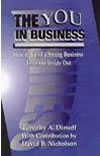4/5/2024· Failure Analysis
Defending Assets: A Legal Perspective On Corrosion Prevention
Corrosion poses a significant threat to various industries, and its impact on assets cannot be underestimated. As an engineer, you might wonder how this topic can be of interest to an attorney. Well, attorneys play a crucial role in protecting their clients' interests, and corrosion prevention aligns seamlessly with legal strategies aimed at safeguarding assets. In this article, we will explore the legal implications of corrosion and the role attorneys can play in mitigating its risks.















